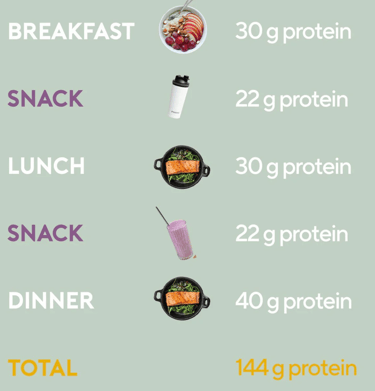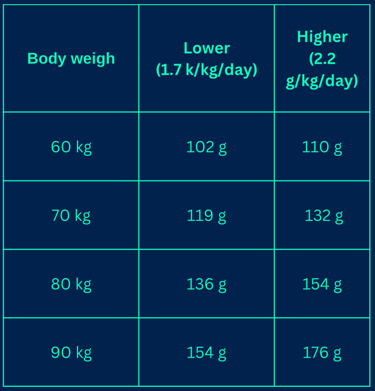
I try all things, I achieve what I can.
How much protein do we need? Basics
Proteios from Greek means "primary"
LONGEVITY
Pavel Skalazub
3/24/20254 min read
I recently completed an internship in a family practice and realized that many people lack basic medical knowledge. Despite the emphasis on preventive medicine, the average person often does not understand fundamental health concepts. This realization prompted me to start educating patients about nutrition and general health practices, but not through my medical training but from external sources like “Outlive” by Peter Attia (big fan of Ayrton Senna - my respect) and science publications.
Unfortunately, as physicians, we are not trained as nutritionists, yet understanding nutrition is essential for preventing many chronic diseases. This gap in our education led me to delve deeper into nutritional science.
Let’s start with something crucial: proteins. It’s a common misconception that only those interested in building muscle need to worry about protein intake. However, after the age of 40, every individual loses about 8% of muscle mass per decade. This makes early nutritional intervention critical.
Another challenge is the nature of 21st-century food, which is often high in fats, low in proteins, and loaded with simple carbohydrates. Many opt for fast food for quick energy boosts to maintain their lifestyle, not realizing the long-term costs. While it's easy to ignore the future consequences when you're young, expecting that future success in your career and personal life will solve everything, it’s important to remember that neglecting your health can have irreversible and severe consequences as time passes.
So, how much proteins do you need per day and what about quality?
simple response: Experts in the field of protein and aging recommend a protein intake between 1.2 and 2.0 g/kg/day or higher for elderly adults
Essential amino acids, particularly leucine, are key to stimulating muscle protein synthesis. Aging adults may need higher amounts of these amino acids to achieve the same muscle-building response as younger individuals due to anabolic resistance.
The quality of protein, defined by its amino acid composition, is important. Animal-based proteins, which are higher in essential amino acids, tend to be more effective than plant-based proteins for promoting muscle health in older adults.
How to get that protein?
For a normal person looking to meet their protein needs effectively, it’s important to choose sources that are both accessible and nutritious. Here are common protein sources and general guidelines on how much protein they provide:
Animal-Based Proteins:
Meat (Beef, Pork, Lamb): A typical serving of cooked meat (about 85 grams or 3 ounces) can provide approximately 20-25 grams of protein.
Poultry (Chicken, Turkey): Similar to red meat, a serving of cooked poultry provides about 20-25 grams of protein.
Fish and Seafood: Fish such as salmon and tuna offer about 20-25 grams of protein per serving. They also provide beneficial omega-3 fatty acids.
Eggs: One large egg contains about 6-7 grams of protein, making them a versatile and economical source.
Dairy Products (Milk, Cheese, Yogurt): Dairy varies in protein content. For instance, one cup of milk has about 8 grams of protein, a single slice of cheese has about 7 grams, and Greek yogurt can have up to 20 grams per serving.
Plant-Based Proteins:
Legumes (Beans, Lentils, Chickpeas): These are excellent sources of protein and fiber. A cup of cooked lentils provides about 18 grams of protein.
Nuts and Seeds (Almonds, Peanuts, Flaxseeds): Nuts and seeds are good snacks that add protein, healthy fats, and other nutrients to your diet. A quarter-cup of almonds offers about 7 grams of protein.
Tofu and Tempeh: Made from soybeans, tofu and tempeh are mainstays in vegetarian diets. A 100-gram serving of tofu provides about 8 grams of protein, while tempeh offers about 19 grams per 100 grams.
Whole Grains (Quinoa, Brown Rice, Whole Wheat): These grains provide a moderate amount of protein; for example, one cup of cooked quinoa offers about 8 grams.
Protein Supplements:
Whey, Casein, Soy Protein Powders: These can be helpful for boosting protein intake, especially around workouts or for people with higher requirements. One scoop generally provides about 20-30 grams of protein.
Practical Tips:
Distribute Protein Intake: Aim to include a protein source in every meal to help maintain muscle mass and overall health, as recommended by dietary guidelines.
Consider Needs: Athletes, older adults, and people recovering from illness may need more protein than the general adult population.
Balance with Other Nutrients: While focusing on protein, don't forget to balance your diet with fruits, vegetables, healthy fats, and carbohydrates.
In conclusion, understanding the vital role of nutrition, particularly protein, in maintaining and enhancing overall health is more than just academic knowledge—it's a practical skill that can significantly improve the quality of our lives. As we continue to navigate the complexities of modern diets and lifestyles, let us commit to educating ourselves and others about the foundational principles of good nutrition. Whether you are a medical professional, a patient, or simply someone interested in leading a healthier life, take the initiative to make informed dietary choices. Remember, it's never too late to start making changes that can have profound effects on your health and longevity. Let's nourish our bodies with the care they deserve, ensuring a healthier future for ourselves and our communities.




